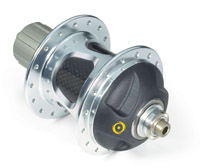Would you like to be Guest Blogger on Training4cyclists.com?
My girlfriend is going to give birth to our first child in a couple of days. That is probably the biggest event in our lives so far and we are really excited about it. Really excited!
Power Meter Tips will be updated
I have been writing a couple of extra posts these days, because I know that there will be some days where my eyes are going to focus on our little baby. Who cares about blogging or computers when they get parent for the first time? Well, I probably don’t, but I guess there will be some visitors for my blog anyway, so I have scheduled a couple of posts for the next 14 days. There will be updates a couple of times each week.
It is uncertain how much time I will spend on answering emails and comments rest of July. I guess you understand my priorities.
Guest Bloggers are welcome
If there are any cycling coaches or riders out there that would like to help me in this situation I will appreciate all kinds of guest posts related to the following topics:
- Cycling Training
- Power Meters
- Heart Rate Monitors
- Reviews
The post will include a short presentation of you and a link to your personal blog.
You can read more about contributing here.
Would you like to be Guest Blogger on Training4cyclists.com? Read More »

